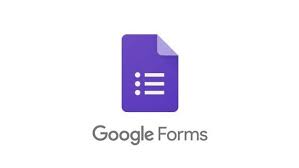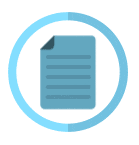The Implementation of Using Flash Card in Teaching Writing
DOI:
https://doi.org/10.31597/sl.v7i1.749Keywords:
writing skill, flash card, teaching writingAbstract
This study aims to determine the feasibility of implementing flascards in teaching riting skills. The qualitative descriptive was used in this study by using content analysis. The technique of obtaining data used documentation. The data were analyzed by coding, displaying, and making verification. The data analysis was carried out in depth by using some theories related to the flashcards in teaching writing skills. The results of the study indicate the interrelation of the implementation and responses of the students in using flashcards. The flashcards is very helpful for students in learning to writing English because it is based on the examples given and they have learnt identifying patterns in writing skill. By seeing some journals stated that using Flashcard can improve writing skills and knowledge of vocabularies. Furthermore, it is suggested that flashcards can be effectively used in writing class.
References
[2] Masyhudianti, U. K., Sutomo, N., & Suparno, S. (2018). The Effectiveness of Schoology to Teach Writing Viewed from Students' Creativity. Journal of Education and Teaching, 5(4), 944.
[3] Herlina, & Dewi, R. R. (2017). Flashcard Media: The Media for Developing Students Understanding for English Vocabulary Understanding for English Vocabulary. Indonesian Journal of Educational Review, 4(1), 116-128.
[4] Ratri, G. R. (2017). Using Flashcards To Improve Students‟ Writing Skill Of Grade Ten
Students of Administrasi Perkantoran Class At Smk Bopkri 1 Yogyakarta. Journal of the Scholarship of Teaching and Learning.
[5] Prastyawan, R. E. (2018). The Process of Students' Essay Writing Through Flash Card and Story Telling: An Implementation of Integrated Writing. Journal of English Education, 05(2), 11.
[6] Nurfiryalianti, Jamiluddin, & Hastini. (2014). Improving Writing Skill by Using Free Writing Technique. e-Journal of English Language Teaching Society (ELTS), 2(3), 2.
[7] Yunus , M. M., & Chien , C. H. (2016). The Use of Mind Mapping Strategy in Malaysian University English Test (MUET) Writing. Creative Education, 7, 621.
[8] Rahmasari, B. S. (2016). The Use of Flashcards In Teaching Vocabulary At Fourth Grade Students of SDN Sukosari 02 Dagangan Madiun. Jurnal Edutama, 3(1).
[9] Anggraini, Lystiarini, & Huda. (2019). internal journal of elementary education, 35-40.
[10] Sari, H. P., Sutanti, N., & Wahyuningsih, L. T. (2018). Developing Flashcard Media for Teaching Vocabulary to the Seventh Grade Students of Junior High School. Konstruktivisme, 10(2), 180-192.
[11] Blaxter, Loraine, & Hughes, C. (2001). How to Research (Second Edition). Buckingham: Open University Press.
[12] Brown , H. D. (2004). Language Assessment. New York: Pearson Education .
[13] Pimada, L. H., Tobab, R., & Rasyidic, A. W. (2020). Learning of Imla‟ Learning of Imla‟Writing Skill at Islamic Elementary School Level in Samarinda. Journal of Arabic LanguageTeaching, Linguistics and Literature.
Downloads
Published
How to Cite
Issue
Section
License
1. Copyright of this journal is possession of Editorial Board and Journal Manager, by the knowledge of author, whilst the moral right of the publication belongs to the author.
2. Legal formal aspect of journal publication accessibility refers to Creative Commons Atribution-ShareAlike (CC BY-SA), implies that this license lets others remix, adapt, and build upon your work even for commercial purposes, as long as they credit you and license their new creations under the identical terms. This license is often compared to “copyleft” free and open source software licenses.
3. Every publications (printed/electronic) are open access for educational purposes, research, and library. Other that the aims mentioned above, editorial board is not responsible for copyright violation















